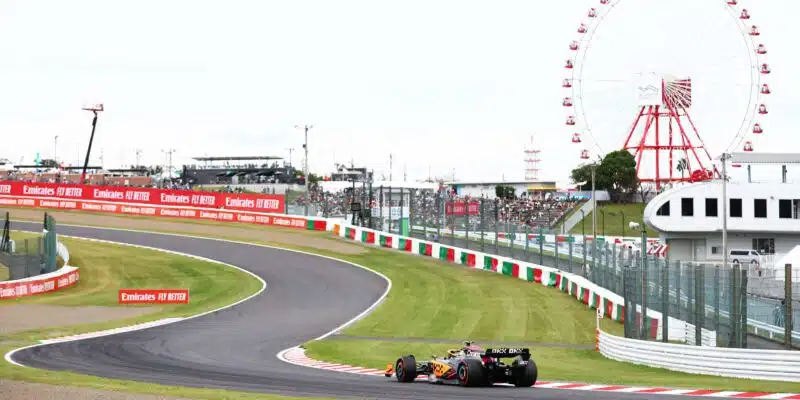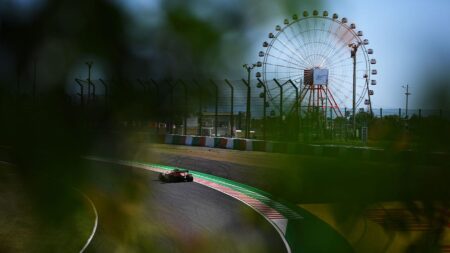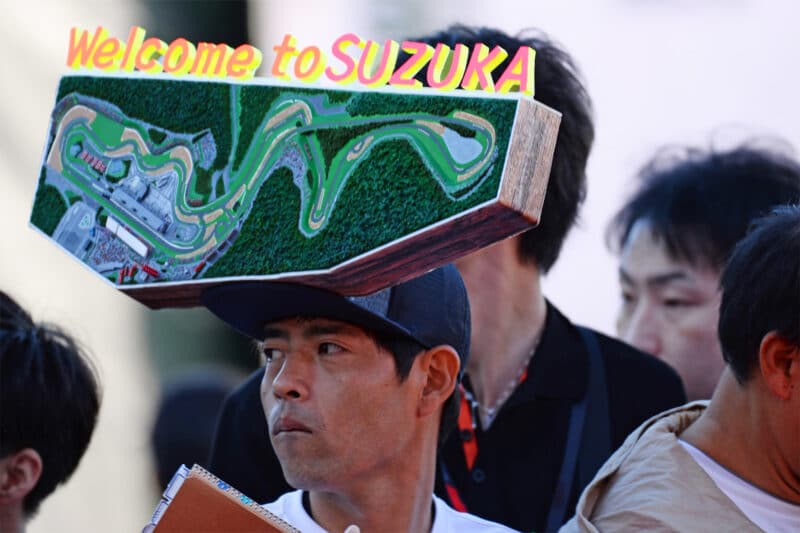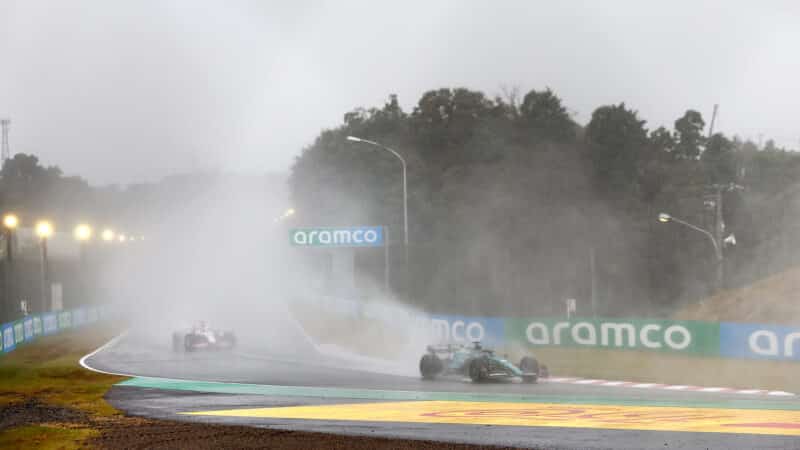Returning to the unique figure-of-eight circuit in 2022 after a two-year Covid-enforced absence, it was hard to tell whether they or the fever-pitched crowd of 200,000 were most thrilled.
“I am really, really excited,” Leclerc said last year. “I love the track, especially the first sector. For me, it’s really, really special. And it has something that you never find anywhere else. Also the passion of fans, it’s incredible.”
Built as a test track by Honda, Suzuka first appeared on the F1 calendar in 1987, and quickly made headlines, whether it was for Ayrton Senna‘s sensational comeback drive from 14th to win the 1988 race or the explosive 1989 and 1990 title-deciding clashes between Senna and Alain Prost.
But at least the warring pair could agree on a shared appreciation for Suzuka. In the words of current and recent drivers, this is why they love visiting the circuit so much.
The corners
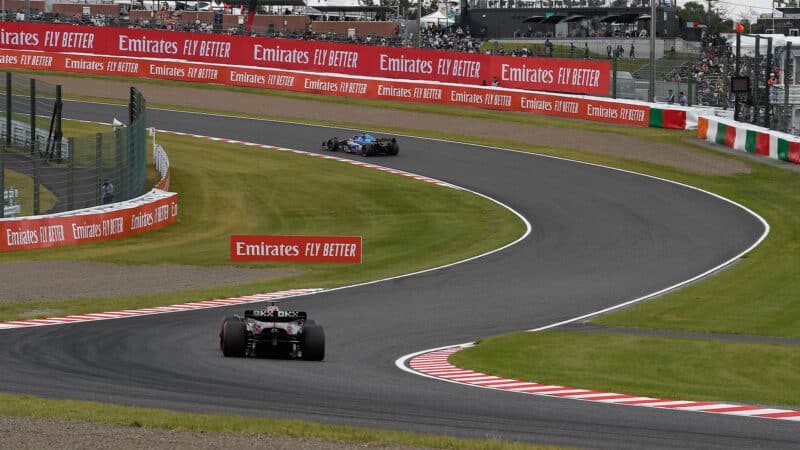
The iconic ‘S Curves’ provide a unique challenge
Grand Prix Photos
“Since I’ve known the track and seen it on TV, it’s one that hasn’t changed,” said Sebastian Vettel last year. The-then Aston Martin driver who witnessed first-hand the transformation of many modern tracks with the laudable goal of improving safety. “It’s a very fast track, a lot of fast corners. I think sector one is just the best part of track that I can imagine.”
Of course, Vettel is referring to the S curves. Coming after the tricky, tightening sequence of Turns 1 and 2, they consist of four fast and flowing corners with a slight banking, surrounded on each side by unforgiving bunker-like gravel traps.
This is what Hamilton refers to as a rollercoaster ride. And it bites hard if drivers get it wrong.
“It’s such an incredible challenge,” said Charles Leclerc last year, shortly before qualifying one hundredth of a second off Max Verstappen‘s pole time. “It’s such a high speed section and also corner after corner. If you miss one, then you miss the whole section. That’s what makes it so exciting to me, driving-wise.”
Nailing the S Curves in qualifying is key to setting up the perfect lap, but these can be more of an ordeal in the race when following leading cars through turbulent air.
“We really missed it,” added Verstappen. “It’s one of these last old-school tracks that when you make a mistake, and you go off, you are really off!”
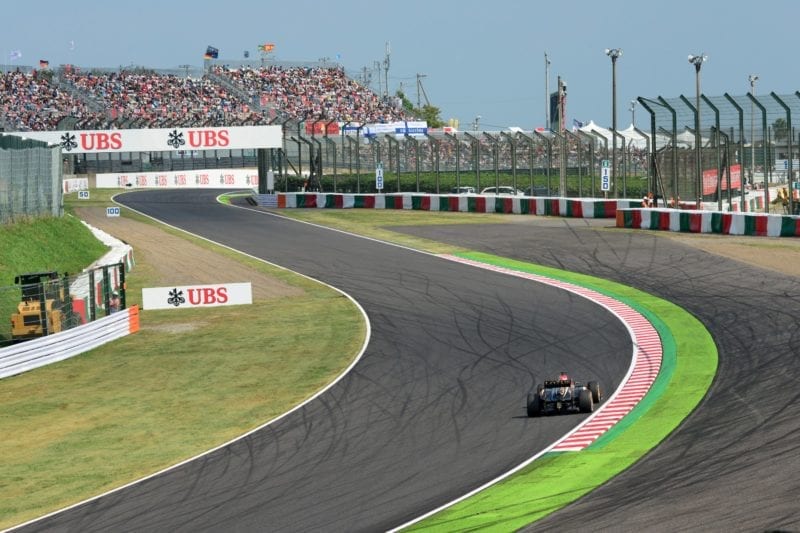
130R at Suzuka is regarded as one of the best corners still on the F1 calendar
Grand Prix Photo
Sector two consists of more technical corners: “It’s a very high speed in Turn 8 [Degner] and then you try to brake as straight as possible four for Turn 9,” says Leclerc. Once through the hairpin (Turn 11), where locking the brakes is an ever-present hazard, drivers race towards Spoon (Turns 13 and 14) — named after the shape of the long 180-degree curve.
“Turn 13 and 14 are very tricky,” said Leclerc. “You never really know when to hit the apex in Turn 14, because it’s such a long corner and you’ve got so many different lines to take.”
Choose the right line, and you’ll have the perfect slingshot to perhaps the most exhilarating point of the circuit: 130R.
Despite the mundane name, referring to its 130 degree radius, the corner is taken flat out at more than 200mph. Few have dared to repeat Fernando Alonso‘s audacious pass on Michael Schumacher at the 2005 Japanese GP where he went side by side with the Ferrari driver, going past on his way to third in the race.
“130R is a bit of an Eau Rouge where the car is easy flat,” said Carlos Sainz. “But still gives you goosebumps every time you go through there.”

The championship decider at the final chicane: Senna and Prost clash at the Casio chicane in 1989
DPPI
Within seconds of navigating the eyeball-popping 130R, drivers are braking down to just 40mph for the Casio Chicane, allowing for one final overtaking opportunity or a chance to close up to the car in front before heading back down to Turn 1.
A charging Kimi Räikkönen provided a brilliant example of the latter in 2005: the Flying Finn forcing Giancarlo Fisichella‘s leading Renault off line through the final sequence of corners and getting a better run down into Turn 1 — sweeping around the outside to capture a brilliant victory.
It has also been the site of great controversy and critical error. No more so than in 1989 when both Senna and Prost had a shot at the title and it was the latter who took the lead and the start and kept his McLaren team-mate behind for most of the race.
With six laps left, the pair darted towards the chicane; Senna around two car-lengths behind and Prost feeling comfortable, leaving the door wide open. Senna lunged, and got his front wheels alongside. Prost, the championship points leader, simply turned in early, locked wheels with Senna and took both out of the race…. or so it appeared.
As Prost climbed out of the car, apparently the world champion, Senna cajoled marshals into giving him an illegal bump start and then rejoined, crucially cutting the chicane. He crossed the line first but was later disqualified on the technicality that he missed the corner, and ceded the title to Prost.
The corner played host to the most recent championship decider too, when Leclerc locked up on the final lap in 2022 while battling Sergio Perez for second. He too cut the chicane and was handed a five-second penalty that dropped him behind Perez in the classification, leaving Verstappen with a championship lead that couldn’t be overhauled.
